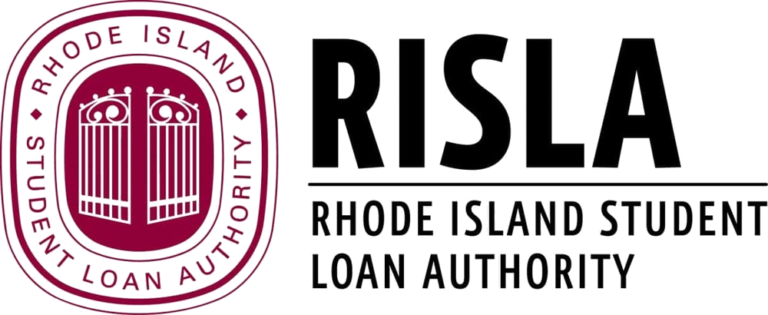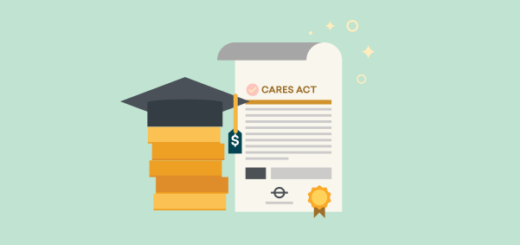Can you use a 529 to Pay Student Loans?
Our goal is to give you the tools and confidence you need to improve your finances. Although we receive compensation from our partner lenders, whom we will always identify, all opinions are our own. Credible Operations, Inc. NMLS # 1681276, is referred to here as “Credible.”
As of 2021, 43.2 million U.S. adults owe $1.75 trillion in student loan debt with an average student loan debt of $39,351, according to data review and reporting by EducationData.org. While it can be difficult to tackle this amount of debt after you graduate, the good news is that several strategies could help you pay it off more easily.
For example, if you have a 529 plan, you might be able to use leftover funds to pay down your student loan balance with no tax penalty.
If you’re wondering whether you can use a 529 plan to pay student loans, here’s what you should know:
What is a 529 plan?
Established in 1996, 529 plans (also known as qualified tuition plans) are a type of tax-advantaged investment account that can help families save for college. Anyone over the age of 18 with a physical U.S. address and a Social Security number or Tax ID number can start a 529 plan — you’ll just need to provide the Social Security number or Tax ID number of the intended beneficiary.
Contributions made to a 529 plan aren’t deductible from federal income taxes, though some states offer state-level income tax breaks to residents. However, money in a 529 account isn’t subject to taxes and can be withdrawn tax-free as long as it’s used to cover a qualified education expense (such as tuition or fees).
Types of 529 plans
Two types of 529 plans are available, including:
- Education savings plans: This is the typical kind of 529 plan and works similarly to a Roth IRA. You won’t get a tax deduction for contributions, but withdrawals are tax-free as long as you use the funds to cover qualified education expenses. This means you’ll avoid capital gains taxes on your college savings. Note that while these plans are sponsored by state governments, most of them don’t come with residency requirements.
- Prepaid tuition plans: This type of plan allows you to save for education expenses while locking in current tuition rates at certain schools. Considering that tuition costs typically rise over time, a prepaid tuition plan could offer significant savings. However, these plans are available only at participating public in-state colleges and universities, which means you’ll have to make a long-term commitment to that school. Also note that the federal government doesn’t guarantee prepaid tuition plans. Instead, state governments sponsor most of these plans, and they typically come with residency requirements.
Learn More: How to Get Student Loans, Grants, and More for Adult Learners
Can you use a 529 plan for student loans?
Yes, you might be able to use a 529 plan to make student loan payments. In the past, withdrawing 529 plan funds for anything other than qualified education expenses came with a 10% federal tax penalty. But this rule changed when the Setting Every Community Up for Retirement Enhancement (SECURE) Act was passed in 2019.
Under the SECURE Act, 529 plan beneficiaries can now use 529 plan funds to:
- Make student loan payments: Beneficiaries can use up to $10,000 from a 529 plan to repay qualified student loan debt. The siblings of the beneficiary can also use up to $10,000 each to repay qualified student loans — for example, if a family has two children, they can withdraw up to $20,000 for student loan payments. Note that this $10,000 limit is a lifetime limit.
- Pay for registered apprenticeship programs: Originally, you could only use 529 plan distributions to pay for traditional colleges and universities. The SECURE Act has expanded this to allow beneficiaries to pay for registered apprenticeship programs with no penalty.
But if you end up with leftover funds in a 529 plan, you might consider using them to pay down student loan debt from one of the beneficiary’s siblings.
How to use a 529 plan for student loans
If you’d like to use your 529 plan funds to make a student loan payment, follow these four steps:
- Review your state’s rules. While the SECURE Act took effect in 2019, only 37 states have updated their tax laws to classify student loans as a qualified expense. Before making a withdrawal, check to see if you’ll owe any state taxes on that amount.
- Decide how much to withdraw. You can take out a lifetime maximum of $10,000 from a 529 plan to pay toward student loans. However, you might prefer to spread this amount over time — for example, if you’d like to give the investments in a 529 plan portfolio a chance to recover from a market downturn.
- Request the withdrawal. You can typically request a withdrawal online, by mail, by fax, or by calling your plan’s administrator.
- Make your student loan payment. The funds from a 529 plan distribution can be sent directly to the lender, sent to the beneficiary, or used as a reimbursement if you’ve already made student loan payments via check or electronic payment. Just be sure that the distribution and student loan payment happen in the same tax year — and keep records proving this. Otherwise, you might end up with a penalty.
Check Out: Student Loan Repayment Calculator: Estimate Your Payoff Date
Uses for leftover 529 money
In some cases, families might end up with leftover 529 plan funds — for example, maybe the beneficiary chose a less expensive school, enlisted in the military, or didn’t go to college. If you have unused funds sitting in a 529 plan, here are some penalty-free options to consider:
- Change the beneficiary. You can switch the beneficiary of a 529 plan to an eligible family member of the original beneficiary — such as a sibling, first cousin, or parent.
- Rollover the funds. If a sibling of the beneficiary has their own 529 plan, you could roll the leftover funds over into their account.
- Pay the student loan debt of a sibling who has already graduated. If a sibling of the beneficiary has already graduated, you could use the leftover 529 plan funds to help them pay down their student loans.
Consider refinancing to save money on your student loans
Another option for saving money on your student loans is refinancing. If you refinance your student loans, your old loans will be paid off with a new private loan — leaving you with just one loan and payment to manage.
Depending on your credit, refinancing might get you a lower interest rate — which could save you money on interest and even potentially help you pay off your loans faster. Or you could opt to extend your repayment term to reduce your monthly payments, though this means you’ll pay more in interest over time.
If you decide to refinance your student loans, be sure to shop around and consider as many lenders as possible to find the right loan for your needs. Credible makes this easy — you can compare your prequalified rates from multiple lenders in two minutes.
| Lender | Fixed rates from (APR) | Variable rates from (APR) | Loan terms (years) | Loan amounts |
|---|---|---|---|---|
 |
2.94%+ | N/A | 10, 15, 20 | $7,500 up to up to $200,000 (larger balances require special approval) |
|
||||
 |
2.15%+ | 1.83%+ | 5, 7, 10, 15, 20 | $10,000 up to $250,000 (depending on degree) |
|
||||
 |
2.84%+1 | 1.99%+1 | 5, 7, 10, 15, 20 | $10,000 to $500,000 (depending on degree and loan type) |
|
||||
 |
2.99%+2 | 2.94%+2 | 5, 7, 10, 12, 15, 20 | $5,000 to $300,000 (depending on degree type) |
|
||||
 |
4.16%+ | 4.11%+ | 5, 7, 10, 15, 20 | $5,000 to $500,000 |
|
||||
 |
2.91%+5 | 2.91%+5 | 5, 10, 15, 20 | $1,000 to $250,000 |
|
||||
 |
2.43%+3 | 1.86%+3 | 5, 7, 10, 12, 15, 20 | $15,000 to $250,000 |
|
||||
 |
3.47%+4 | 2.44%+4 | 5, 10, 15, 20 | $5,000 – $250,000 |
|
||||
 |
4.44%+ 7 |
N/A | 5, 7, 10, 12, 15, 20 | Up to $300,000 |
|
||||
 |
2.49%+ | 1.9%+ | 5, 7, 10, 15 | Up to $300,000 |
|
||||
 |
2.95%+ | N/A | 7, 10, 15 | $10,000 up to the total amount of qualified education debt |
|
||||
 |
2.89%+ | N/A | 5, 8, 12, 15 | $7,500 to $300,000 |
|
||||
 |
2.69%+ | N/A | 5, 10, 15 | $7,500 up to $250,000 (depending on highest degree earned) |
|
||||
| Compare personalized rates from multiple lenders without affecting your credit score. 100% free!Compare Now |
||||
|
All APRs reflect autopay and loyalty discounts where available | 1Citizens Disclosures | 2College Ave Disclosures | 5EDvestinU Disclosures | 3 ELFI Disclosures | 4INvestEd Disclosures | 7ISL Education Lending Disclosures |
||||




